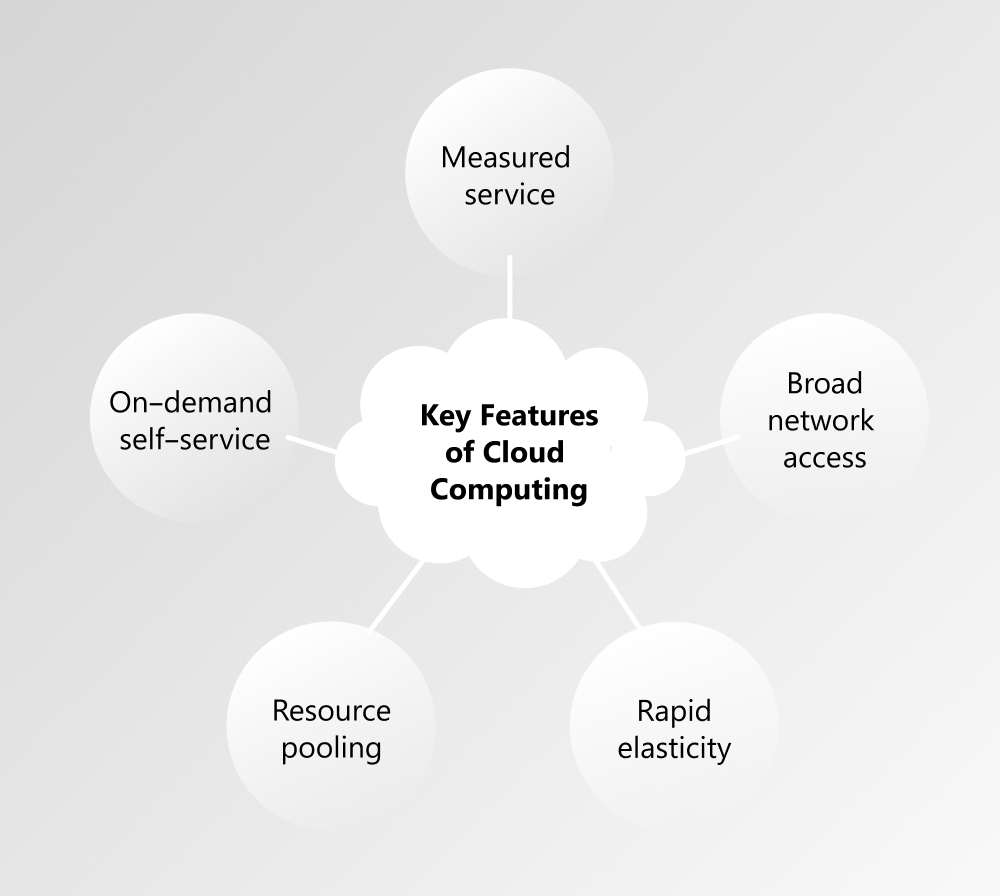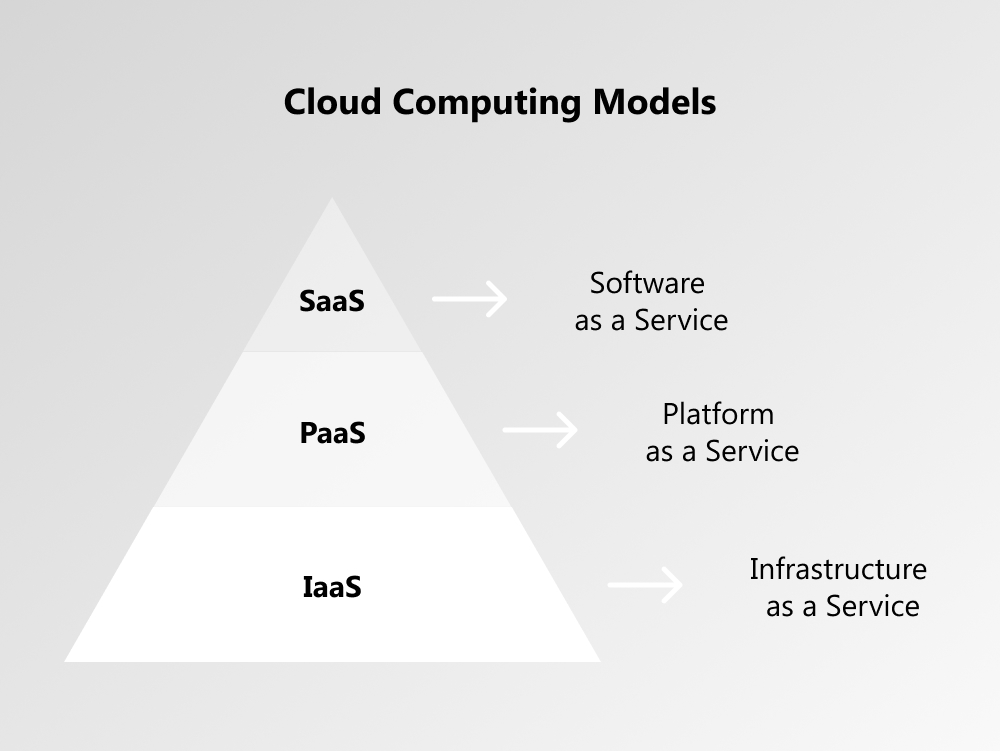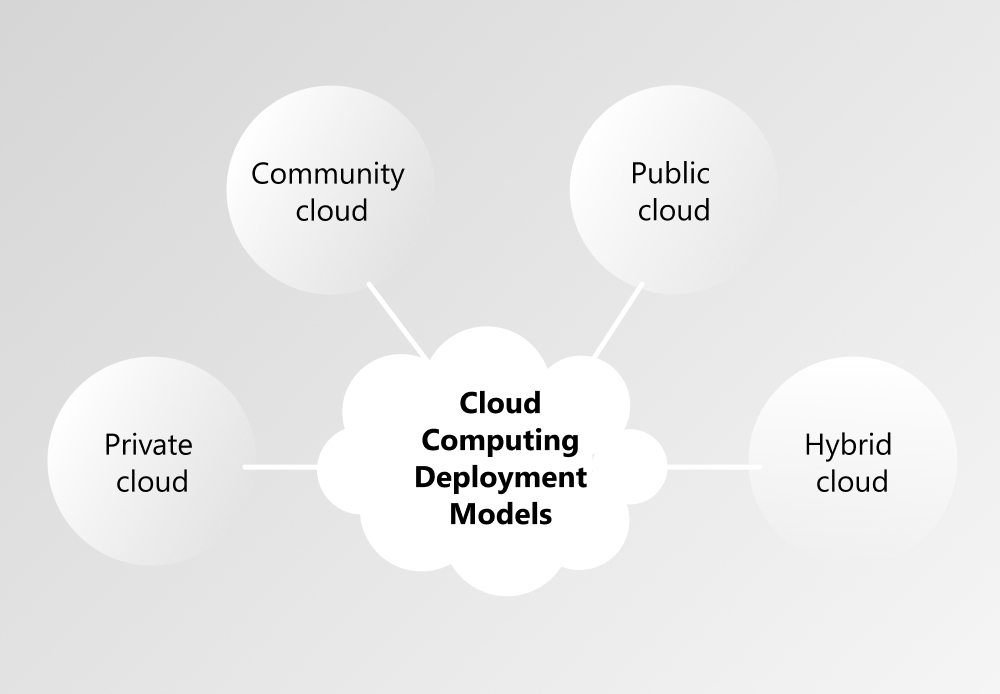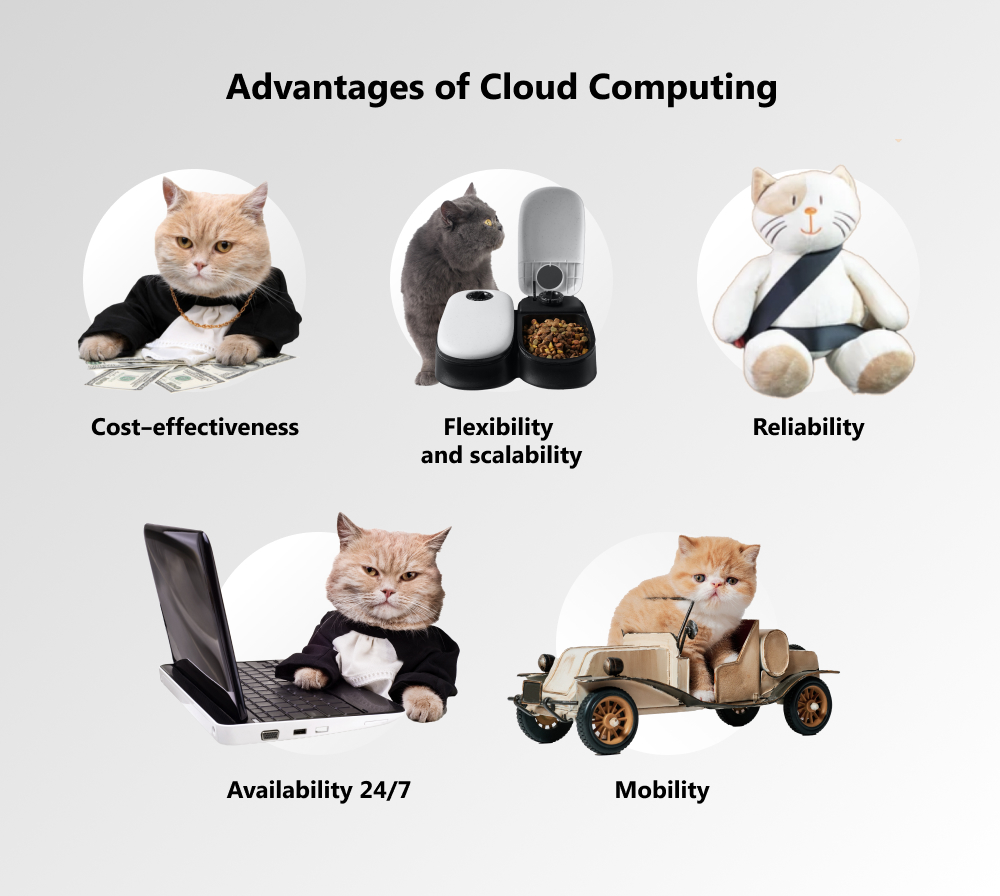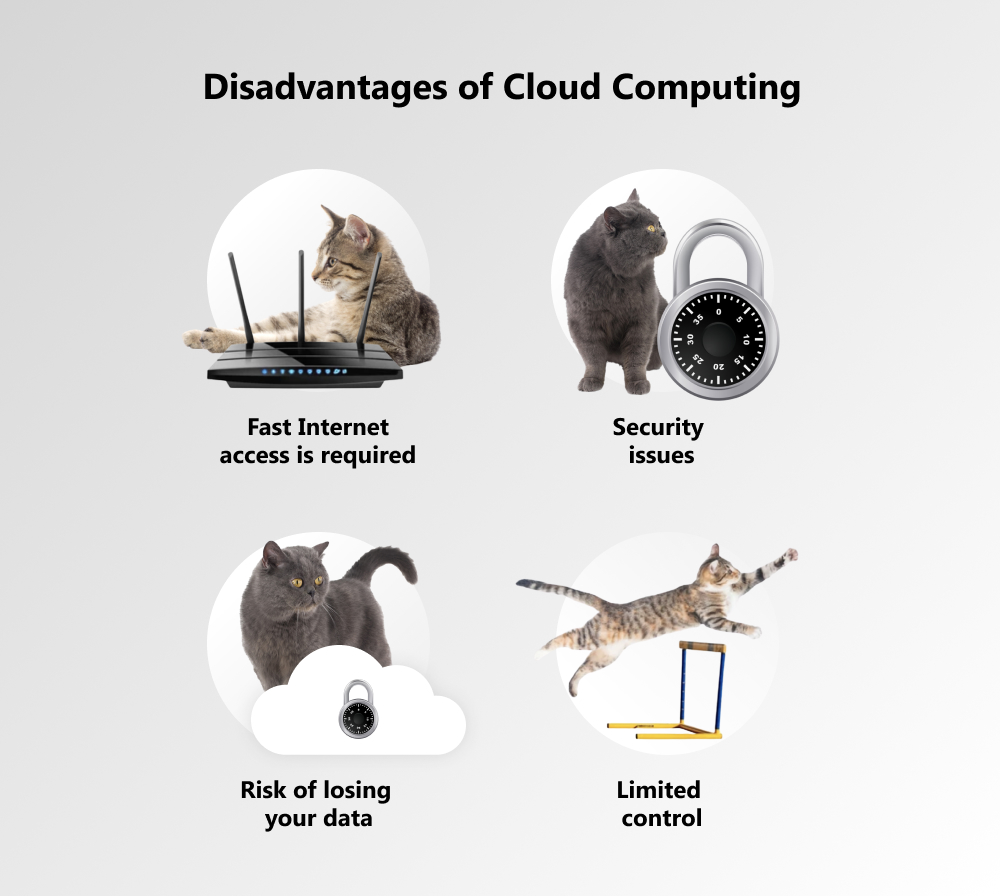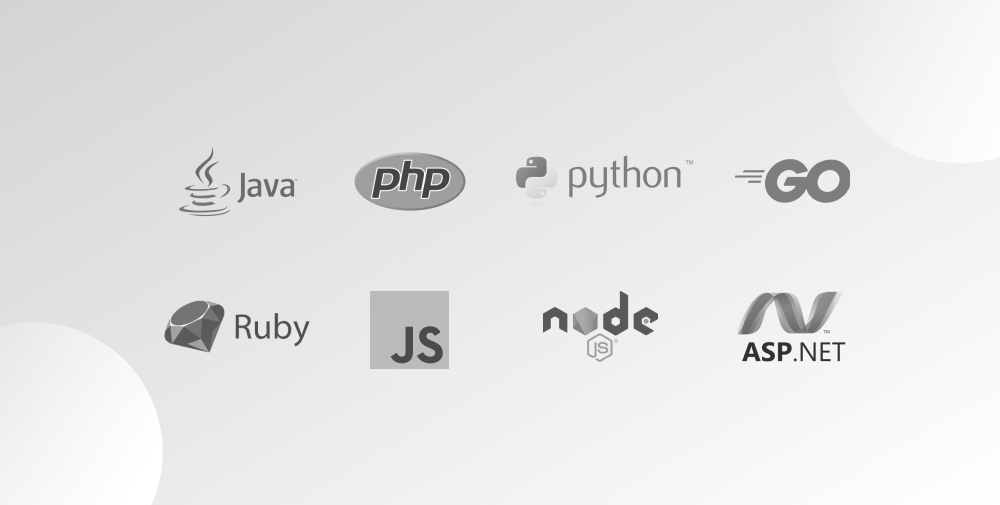The global cloud computing market is growing rapidly, as evidenced by the report provided by MarketsandMarkets. It reached $371.4 billion in 2020 and is expected to grow to $832.1 billion by 2025. Both large and small companies engaged in various industries avail of cloud solutions today. These services can be used for a wide variety of purposes, including data backup, disaster recovery, software development and testing, big data analytics, and much more. Let's find out what cloud computing is, how it can benefit your business, and what cloud programming languages are popular in this area.
written by:
Olga Shimko
Senior Software Developer
The global cloud computing market is growing rapidly, as evidenced by the report provided by MarketsandMarkets. It reached $371.4 billion in 2020 and is expected to grow to $832.1 billion by 2025. Both large and small companies engaged in various industries avail of cloud solutions today. These services can be used for a wide variety of purposes, including data backup, disaster recovery, software development and testing, big data analytics, and much more. Let's find out what cloud computing is, how it can benefit your business, and what cloud programming languages are popular in this area.
Contents
Cloud Computing: Features, Models, Benefits
Cloud computing is a model of operation through which a company gains access to shared computing resources, such as servers, storage, network, applications, and other cloud services. All resources can be used and managed by the user without additional assistance from the cloud provider.
Key Features of Cloud Computing
Cloud computing is characterized by certain features, so let's quickly analyze them.
On-Demand Self-Service
If you decide on the weekend that you need to use the networked storage or other cloud service, you can employ it without the help of the provider's staff.
Broad Network Access
You need to have network access to take advantage of the capabilities and services of cloud computing. Moreover, you can use the services from various devices like laptops or smartphones.
Resource Pooling
The provider combines all cloud resources into one pool and offers them for use through multitenancy. All virtual and physical cloud resources are provided based on your and other users' needs. The resources include storage, RAM, virtual machines, computing power, bandwidth, and others.
Rapid Elasticity
If necessary, the amount of resources is quickly reserved and scaled in compliance with your requirements. Providers allow users to buy the resources at any time and in any volume.
Measured Service
All resources are automatically monitored, measured, and optimized to ensure data transparency. These resources include computing power, number of active users, storage capacity, bandwidth, and much more.
Cloud Computing Models
Software as a Service (SaaS)
This cloud model involves the use of the provider's software that operates in the cloud infrastructure. You can use it via a client or software interface. But in this case, you can't manage the cloud infrastructure.
Examples: Salesforce, Microsoft Office 365, Google Apps, Slack, Amazon Web Services (AWS), Dropbox, DocuSign, etc.
Platform as a Service (PaaS)
The cloud provider will give you a cloud computing platform with all the necessary cloud programming languages, services, tools, and libraries. You won't be able to manage the underlying cloud infrastructure, servers, network, operating systems, and storage. Still, you'll be able to manage applications and partially the application environment configuration settings.
Examples: Magento Commerce Cloud, Windows Azure, AWS Elastic Beanstalk, Force, etc.
Infrastructure as a Service (IaaS)
You have computing capacity, storage, networks, and other crucial computing resources (apps, operating systems) using which you can deploy and manage your software. Although you can't manage the cloud infrastructure, you can customize the operating system, deployed applications, and storage, and partially manage some networking components, such as host-based firewalls.
Examples: Google Compute Engine (GCE), AWS EC2, Digital Ocean, Rackspace, etc.
Cloud Computing Deployment Models
There are four types of cloud computing deployment models, and below, you’ll find their brief descriptions.
Private Cloud
All private cloud resources are used by only one company or group of companies. Both provider and company can manage the cloud computing deployment model. If the company doesn't have the required specialists, it can employ a remote administration service.
Community Cloud
The provider gives cloud infrastructure to the community of users that have a common mission, security policy, and requirements for the proper work. A cloud can be owned and managed by several community organizations or a service provider.
Public Cloud
The public cloud resources can be employed by various users on the internet. The cloud infrastructure is usually managed and owned by a particular government, commercial, or academic organization. Both ordinary users and large companies can employ public cloud services.
Hybrid Cloud
This model consists of the public and private clouds, which allows companies to determine the optimal environment for every operating task. When the company lacks internal resources (private cloud), it can employ the provider's computation capacities (public cloud). It should be taken into account that you won't be able to manage the private and public cloud as one unit. Both models will be independent units combined with the proprietary technology.
Benefits of Cloud Computing
Six out of ten companies employed cloud solutions in 2020, according to Flexera. Why do businesses choose these technologies? The answer is simple — cloud computing offers them lots of advantages.
Cost-Effectiveness
Companies don't need to spend money on expensive hardware & software and hire maintenance staff. Using cloud-based systems also saves a lot of money on electricity and server cooling. Businesses pay only for the lease of competition power and software.
Flexibility and Scalability
The company can use only those resources that are needed, as well as regulate their volume. In addition, it’s possible to scale the cloud infrastructure in a matter of seconds.
Reliability
As a rule, providers can ensure a high level of reliability as they can purchase and maintain professional equipment. To protect your business even more, they take additional measures, such as backup and hosted storage.
Availability 24/7
To access information stored in the cloud at any time, you need the internet only. Round-the-clock access is the ultimate advantage of cloud services. Does your company operate in the same program from different offices located in other cities and countries? Clouds allow you and your employers to be independent of the time of day.
Mobility
You can use the cloud in any location using any device (your computer, smartphone, laptop, tablet, etc.). This is especially valuable for those who work remotely, or for those companies that work with outsourced personnel.
Drawbacks of Cloud Computing
Despite the range of advantages, cloud technologies have certain pitfalls. So, keep them in mind before moving your services to the cloud.
Fast Internet Access Is Required
To take advantage of the cloud infrastructure, you must be always online. If you don’t have access to the high-speed internet, your cloud computing machine may get disconnected. And this is a burning issue for many developing countries.
Security Issues
You must give cloud providers access to your confidential data that will be stored in the cloud on the web. Although providers offer the best security standards and certifications, they can be attacked by hackers.
Risk of Losing Your Data
If the provider's servers break down, you can lose all your data. So, when choosing a cloud provider, make sure it takes all necessary data protection measures and uses upscale security services.
Limited Control
Since cloud platforms are owned and operated by outside providers, you will not be able to control the servers in full. So, a reliable cloud provider is a must.
Most Popular Cloud Computing Languages
As you see, cloud-based applications are widely used by various companies all over the world thanks to their flexibility, scalability, and reliability. And now, it's time to learn what programming languages cloud engineers & developers use to create their solutions.
#1. Java
Java is one of the most widespread and popular programming languages today, according to Statista. Sun Microsystems developed it in 1995. Java is an object-oriented language that allows developers to build large, flexible, scalable, and extensible applications. It supports polymorphism, inheritance, and static typing. Moreover, Java is the ambassador of type-safe programming languages, empowered by a comprehensive security framework, cryptographic & public key infrastructure, and automatic garbage collection. And since Java applications are enriched with optimized database communication, they may boast backward compatibility.
That's why, Java is actively used to create software for multiple devices, such as computers, tablets, smartphones, and even household appliances.
#2. PHP
PHP, or Hypertext Preprocessor, was created by a Danish programmer Rasmus Lerdorf in 1994. It originally represented a set of scripts in Perl. This set of scripts was then rewritten into the C interpreter. PHP was used to build websites and web applications. W3Techs found out that almost 80% of all websites use PHP as the server-side language. PHP supports many database systems, such as Oracle, MySQL, Postgre, MSSQL, MongoDB, and others. This language is suitable for developing websites on all the most common operating systems (Windows, macOS, and Linux).
#3. Python
Python was developed and created by a Dutch programmer, Guido van Rossum, in 1991. It is a high-level language scripting programming language, the hallmark of which is its versatility. Nowadays, it is applied in various fields, such as machine learning, development of web applications, parsing, and others. Python is an extremely simple and flexible language that contains a small number of keywords. One of its main advantages is that the Python interpreter is implemented on almost all platforms and operating systems. Its another valuable feature is extensibility.
#4. Go
Golang, or Go, is a relatively new compiled, multithreaded programming language developed by Google in 2009. It's an open-source project that allows developers to use its codes and compiler for free. Go is a cross-platform language that allows programmers to create software for various operating systems, such as Windows, macOS, or Linux. You can easily transfer programs written for one of these operating systems to another OS. Go is designed for creating various kinds of apps.
#5. Ruby
Ruby is a dynamic, general-purpose, object-oriented programming language developed by Yukihiro Matsumoto in 1995. It is used in web development as a part of the open-source Rails web framework, a.k.a. Ruby on Rails (RoR). According to Hotframeworks, it ranked fourth among the most popular frameworks. Its innovative features involve seamless database integration, migrations, and view creation.
#6. JavaScript
JavaScript is the leader among web application programming languages, according to the 2020 Stackoverflow Developer Survey. This programming language allows you to create dynamically updated content, animate images, manipulate media, and perform other things. It was initially developed to make web pages come alive. Programs in this language are called scripts. They can be embedded in HTML and executed automatically when the web page is loaded. Scripts are distributed and executed as plain text. They don't need any special preparation or compilation to run. JavaScript is supported by all major browsers and platforms. It's fully integrated with HTML/CSS, which makes it faster and easier than other programming languages.
So, we've told you about 6 programming languages for the cloud. But we'd like to extend our list with two frameworks that can also be used in this field.
#7. Node.js
Node.js is a JavaScript server-side development framework released in 2009. It is cross-platform and open-source. Although Node.js is mostly applied to write web servers, it has a lot of other use cases as well. It is built on the basis of Google's V8 JavaScript engine, which is used in Google Chrome. Node.js is employed to create web applications, as well as services that require a constant exchange of information with the user (social networks, chats, project collaboration systems, etc.) and can process a lot of requests simultaneously. Like many other languages, it's supported by Windows, macOS, and Linux.
#8. ASP.NET
ASP.NET is a part of the .NET technology developed by Microsoft that is used to build web applications and web services. It allows programmers to create dynamic HTML pages. ASP.NET is the combination of the older ASP technology (Active Server Pages) and the .NET Framework. It contains many out-of-the-box control components, allowing you to quickly create interactive websites. You can also use the solutions provided by other websites transparently to the users of your website. ASP.NET allows developers to program in different languages, such as C#, Visual Basic, and J#. Like other Microsoft products, it is mostly used to develop in-house software.
Wrapping Up
Many companies are using cloud technologies nowadays, and there is no doubt that more businesses will move to the clouds in the near future. These solutions offer multiple benefits, like significant cost savings, high performance, scalability, and data security. So, if you think about joining this promising market, it's time to make the decision right now.
If you are interested in cloud computing or have any questions regarding programming languages for cloud, don't hesitate to contact our support team or visit our website.

Contacts
Feel free to get in touch with us! Use this contact form for an ASAP response.
Call us at +44 781 135 1374
E-mail us at request@qulix.com



